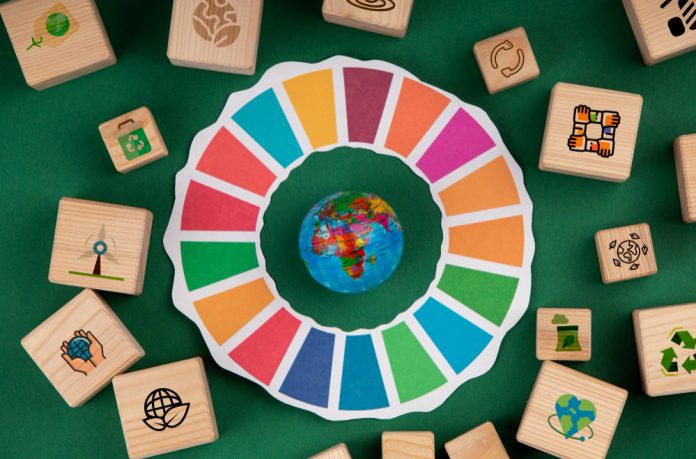According to recent studies, Kenya has demonstrated noteworthy advancements in a number of Sustainable Development Goals (SDGs) associated with its Vision 2030 agenda. Kenya’s long-term development plan, Vision 2030, intends to make the country a middle-income, newly industrializing country by 2030. Kenya has been aiming to achieve Vision 2030, which is closely aligned with the SDGs. Here are a few SDGs in which Kenya has demonstrated noteworthy advancement:
SDG 4: Quality Education. Kenya has made strides in improving access to quality education, with significant investments in basic education. The government has implemented free primary education and free day secondary education policies, leading to increased enrollment rates. There has also been a focus on digital learning and infrastructure development in schools. Despite progress, challenges remain in terms of quality of education, regional disparities, and access to higher education.
SDG 6: Clean Water and Sanitation. Kenya has made progress in improving access to clean water and sanitation, particularly in urban areas. There have been efforts to expand water infrastructure and improve sanitation facilities, reducing waterborne diseases and improving public health. Rural areas still face significant challenges in access to clean water and adequate sanitation facilities.
SDG 7: Affordable and Clean Energy. Kenya has made remarkable progress in expanding access to affordable and clean energy, particularly through investments in renewable energy sources such as geothermal, wind, and solar power. Kenya is a leader in geothermal energy production in Africa and has made strides in increasing access to electricity in rural areas. While access to electricity has improved, some regions still lack reliable energy, and there is a need to enhance grid infrastructure.
SDG 9: Industry, Innovation, and Infrastructure. Kenya has invested heavily in infrastructure development, including roads, railways, ports, and airports. The Standard Gauge Railway (SGR) is a key project under Vision 2030, improving connectivity and promoting trade. Kenya is also fostering innovation through various initiatives to support the growth of tech startups and industries. Continued investment is needed to maintain and expand infrastructure, particularly in rural areas, and to support industrial growth.
SDG 13: Climate Action. Kenya has been proactive in addressing climate change through policies and initiatives aimed at reducing carbon emissions, promoting renewable energy, and enhancing climate resilience. The government has developed a National Climate Change Action Plan and is involved in reforestation and conservation efforts. Climate change remains a significant threat, particularly with impacts on agriculture, water resources, and biodiversity. More needs to be done to build resilience in vulnerable communities.
SDG 3: Health and well-being. Kenya has made improvements in healthcare quality and accessibility, particularly for women and children. The purpose of the Universal Health Coverage (UHC) pilot program is to ensure that everyone has access to healthcare. In addition to raising immunization rates, efforts have been done to combat infectious diseases like malaria and HIV/AIDS. Health disparities still exist, particularly in underprivileged and rural areas. The issues facing the healthcare system are a skilled labor force, limited infrastructure, and a shortage of resources.
SDG 2: Zero Hunger. Kenya has worked to improve food security by implementing agricultural policies and initiatives that are meant to boost resilience and productivity. Value addition in agriculture, irrigation, and contemporary farming methods have all been supported by the government. Food insecurity persists despite advancements, especially in arid and semi-arid areas vulnerable to drought and climate fluctuations.
SDG 5: Gender Equality. Kenya has made some progress in promoting gender equality, including legal and policy frameworks to support women’s rights and participation in various sectors. The Constitution of Kenya (2010) includes provisions for gender equality, and there have been efforts to increase women’s representation in leadership roles. Recently Kenya appointed its first ever female attorney general. Gender-based violence, cultural practices, and limited access to economic opportunities for women continue to be significant challenges.
SDG 17: Partnerships for the Goals. To accomplish the SDGs, Kenya has participated in several international alliances and partnerships. The government implements development projects and mobilizes resources in collaboration with civil society, commercial sector partners, and foreign organizations. More reliable systems are required to keep an eye on, assess, and guarantee that partnerships are in line with national priorities.
Even though Kenya has achieved several SDGs with great success, more effort is still required in several areas to guarantee that the nation fulfills its Vision 2030 targets. Issues like poverty, inequality, and climate change necessitate consistent work and cooperation from all facets of society. Achieving the SDGs in Kenya will depend on sustained investment in environmental sustainability, healthcare, education, and infrastructure.





